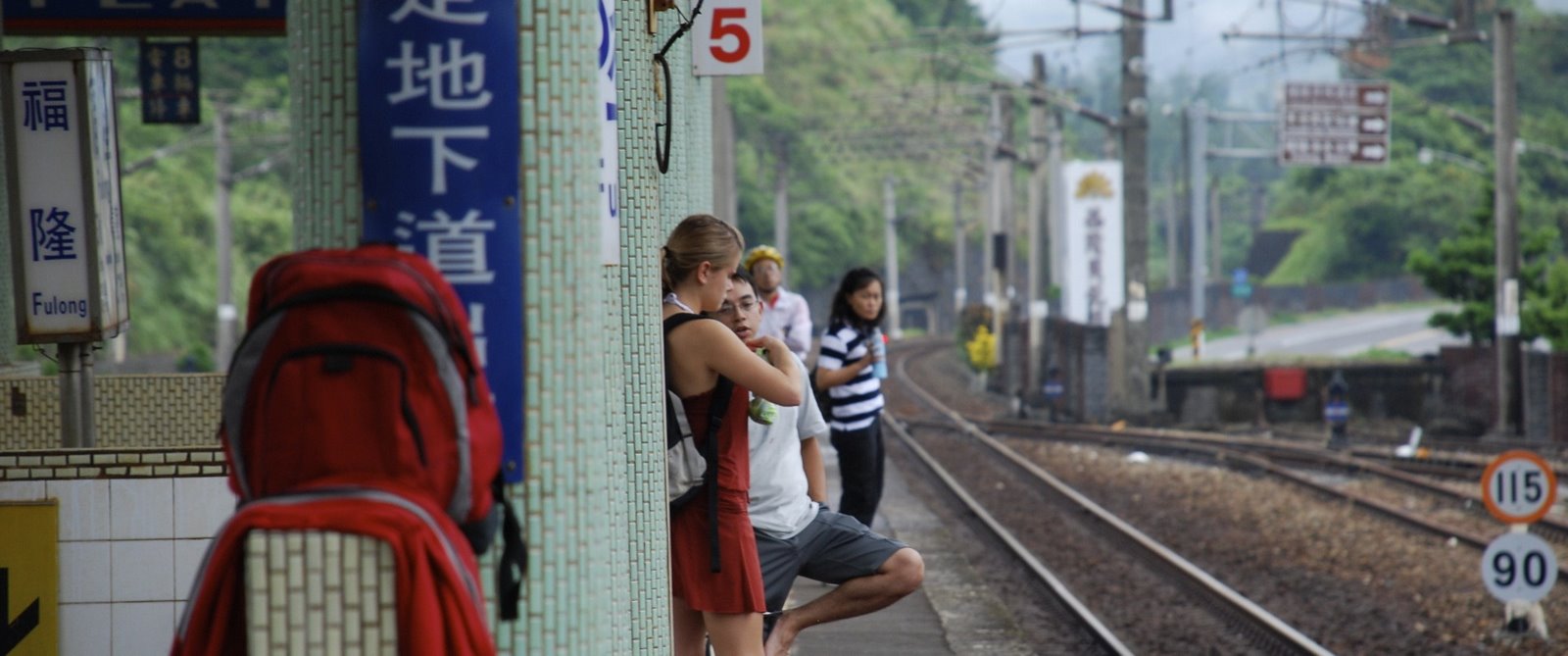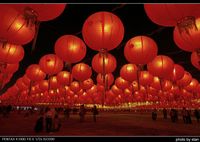
“Tony, Tony, Come Around
Something’s Lost and Must Be Found”
-Jules to St. Anthony
Something’s Lost and Must Be Found”
-Jules to St. Anthony
This past weekend was quite eventful, and will thus make up a couple of separate posts.
If you have been a swell reader, then you'll know that the Ghost Festival in the middle of Ghost Month was this past Sunday. Interested in catching some of the festivities, I began discussion with an adviser and friend about how and where to get the best view. She recommended the Keelung (Jilong) Festival, as previously mentioned, one of the largest in Taiwan. Keelung is a harbor town East of Taipei (Northern Taiwan) and about an hour and a half from our homes in Yilan. The Festival was on Sunday night, and so to make a full weekend adventure out of it, we decided to have fun up North on Saturday as well.
9 ETAs went to Taipei for a Tap Dance Performance called Tap Together; it was the culminating performance of a long period of international dancing exhibitions. I am told they had a great time, enjoyed the show and drinks, and the hostel, not so much.
3 of us however decided to take our adviser up on a generous offer. She, with her husband/partner (an apparently common arrangement for Taiwanese not wishing to have children is to remain committed as dinghezu, a term which tells potential pestering friends, parents, and grandparents to quit worrying about future children; hearing “married” tends to incite questions of kids, as this is an extremely family oriented culture, but this term stops even the most curious), own a number of (expensive) homes, including a location in Taipei, one near a river/lake (forget at the moment), and one in Sijhih, a kind of suburb of Taipei, slightly less developed. Hearing that we wanted to head to Keelung on Sunday, she offered for us to crash at her place and do some hiking on Saturday.
We were greeted by her dinghezuren at the Taipei station, who offered us a bag of crackers and cookies, some instructions for hiking, and some gloves for rock climbing. He was on his way to a mandatory temple attendance (Both he and our adviser are Taoist, and though the Festival to which we were heading is significantly more Buddhist, Ghost Month comes with required ceremonies for Taoists as well; in fact, most Taiwanese, whether they formally adhere to a religion or no, follow a mix of religious customs, such as celebrating this festival), and so ushered us into his car, to a small restaurant for some food to go, drove past some cultural sites, entertained us with welcome small-talk and genuine warmth, and then dropped us off at the foot of Xiang Shan 象山 or Elephant Mountain.
The mountain was beautiful. Stone stairs wound up and down and left and right in a variety of networks (I am sure we only traversed a few of them, and were wowed enough by the variety of vistas, scenery, and nature in just over two hours). A large temple stood at the base of the mountain, with speakers blaring recorded chants; the voices sounded female, and despite being rough recordings, very evidently technological and thus out of place in the natural setting, they lent an air of calm mystery to the place that even full daylight and high humidity could not abate). There were temples patchworked all over the mountainside, and trails that branched left and right in various states of less-traveled disrepair (earth- and rain-ruptured blocks curtains of mosquitoes showed that even around temple-side agricultural residences, nature reigns supreme – damn thing reigns over 98% DEET, too, so says my itchy face, arms, and legs).
****Little Guy Outside one of Many Little Temples****

****The mountain was highly populated, with tourists visiting, locals worshiping, farmers living on, and a health-conscious population exercising, such as this man****


****Jules/Michelle at Strategic Lookout****

The main path was easily visible, and though we did not make it to the rock climbing site our new friend had recommended, we did find a magnificent lookout point, where you can full appreciate the size of Taipei 101. Taipei 101 was the world’s tallest building until about a month ago, but it nonetheless is impressive. The perspective is harder to get right below it, but from up here, size it up to the other mammoths of the city, and you know why it’s an item of Taiwanese pride.
****Giant Spider Attacks Giant Building****

The way down, back up, and across lead us through lots of colors and reduced our English to instructional level: “That’s so beautiful! It’s so big! That’s so green! It’s so amazing!” (Dr. Collins would have been proud). Really though, the wonder of the scene was difficult to fully appreciate, even there in the midst of it. Birds were chirping in Taiwanese tongue I’d not yet heard from any wildfowl; faint sing-song Buddhist chants broke around the large boulders off the paths; stray dogs, frogs, giant spiders, and fuzzy golden ants were only some of the animals that most identifiably decorated the woods; there are many times I’ve expressed disbelief that I’m really on this trip, living in Taiwan; this was a time of word-stifling wonder that I could really be in this life, that anything and everything really is alive.
****Jules and some Ferns looking for Sunlight****

Colors:







Taipei is a pedestrian friendly city, and so the walk down from “so amazing” kept the spirits high. We hit Taipei 101(an amazing building that I will have to explore more of during another trip to Taipei; for now I know there’s a large mall with mostly US and European stores, a large foodcourt, and a grocery store with the best (still mediocre) selection of imported beers I’ve found here – finally tried the Belgian Delirium Tremens (Zach and Pat: It not only has the large pink elephant here, but dancing alligators and dragons on circus balls on the label]), and met our adviser/friend who brought us to the essential bubble tea, her lovely apartment (rooftop garden and public space, complete with fluffy bunnies in residence), and then to a Thai restaurant for dinner.
The Thai food was amazing; I particularly enjoyed the "green papaya salad" or "tom sum" (thx, Jules) shaved into thin strips and heavily spiced. Our adviser’s husband (for ease of labeling, see earlier for explanation) met us again and we talked camera shop for a little while.; he published a photography book in Taiwan 30 years ago, instructing a burgeoning upper- and middle-class how to use a flash in outdoor situations, and encouraged me to pursue putting some photos up in a show in Yilan and possibly Taipei.
Dinner also offered the chance to learn a few jokes for Chinese dining. The words for “want rice” sound like the word for beggar, so “wo yao fan” is “I’m a beggar.” You can ask a guest if they “yao fan,” illiciting a smile for sure, and laughter from the rest if they don’t know the joke and agree. Be careful when ordering though; ask the waitress to “qing (please) gei wo fan (gimme rice)” rather than tell her you’re a beggar. Along the same lines, if you eat your rice too quickly, you might be called “fan ton” which covers both the large table rice-bowl and calling someone lightly stupid. Rice on your cheek? Then you “dai bian dang” or “are wearing a lunch-box (typical lunch food),” not dissimilar from our “saving that for later?” These have already become dinnertime hits.
Post-dinner/dessert they brought us to home 2 of 4 in Sijhih, part of a nice gated community for retired folks. The next day involved waterfall hiking (make you wanna drop trou’ and swim waterfalls), Michelle working past a fear of heights, and then meeting the rest of the crew for stage two: Biker Gangs and the Ghost Festival. Check Back Soon.
****Photo Courtesy of Tall Mountain/Hopeful Pearl****

.jpg)

















































